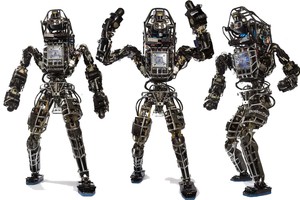
According to the BBC, Carnegie Mellon University researchers are exploring advanced uses of 3D printers: printing with biological materials. Having adapted a low-cost MakerBot 3D printer for their purposes,
it’s hoped that their work might one day end the need for transplants for the repair of damaged organs. 3D printing, typically using plastics or metals, is particularly difficult to perform with soft materials because each layer needs to provide support for subsequent layers, but a new method enabling the printing of soft materials such as alginates, collagens, and fibrins, naturally appearing in the body, has been developed.
In the medical arena, 3D printing has primarily involved the creation of prosthetics. Earlier this week, students at Booker T. Washington High School presented a Waller County 6-year-old girl with a 3D printed prosthetic arm, complete with five functional fingers. A project which took almost a year to complete, five students were guided through the complicated process by their engineering teacher. Organizations like the e-NABLE Community are already changing the world with the combined efforts of volunteers, donations, and 3D-printing, and as the costs for these prosthetics decrease, increasingly responsive and dexterous robotic limbs become more commonplace.
Tissue & Organs
With recent developments around 3D printing of biocompatible cells, materials, and supported components into intricate 3D functional living tissue, 3D printing is being applied to regenerative medicine. Involving additional complexities such as material choice, cell types, growth and differentiation factors, as well as technical challenges relating to sensitivities of living cells and tissue construction, integration of engineering, cell biology, biomaterial science, physics, and medicine is necessary. Already the generation and transplantation of tissues including bone, multi-layered skin, vascular grafts, heart tissue, tracheal splints, and cartilaginous structures have been achieved with 3D printing, and further applications include research, drug discovery, and toxicology.
BioBots

American start-up BioBots is working on making the printing of living tissue easier and cheaper by combining the ability of high-end tissue fabrication (often requiring large and expensive machinery in the $100,000 range) with inexpensive desktop 3D printing equipment. Beginning at the University of Pennsylvania last year, the project quickly moved to Dreamit Health Accelerator in Philadelphia, thereafter winning awards at South By Southwest and TechCrunch Disrupt. BioBots uses cartridge technology similar to inkjet printers able to build tissues at resolutions of 100 micrometers, rapidly cured using a special blue light which doesn’t damage the cells. The initial system sold for only $5,000, with second generation versions available for pre-order for $25,000. A notable feature of BioBots is the interchangeable cartridges which contain the necessary biomaterial, evidently to be sold for $700 each, with a month-long shelf life. Initially, the BioBots team is aiming for their machines to be used in medical and pharmaceutical testing, specifically in countries where animal testing is banned.
Source
http://cloudtweaks.com/2015/11/3d-printing-growing-traction-in-the-healthcare-field/
